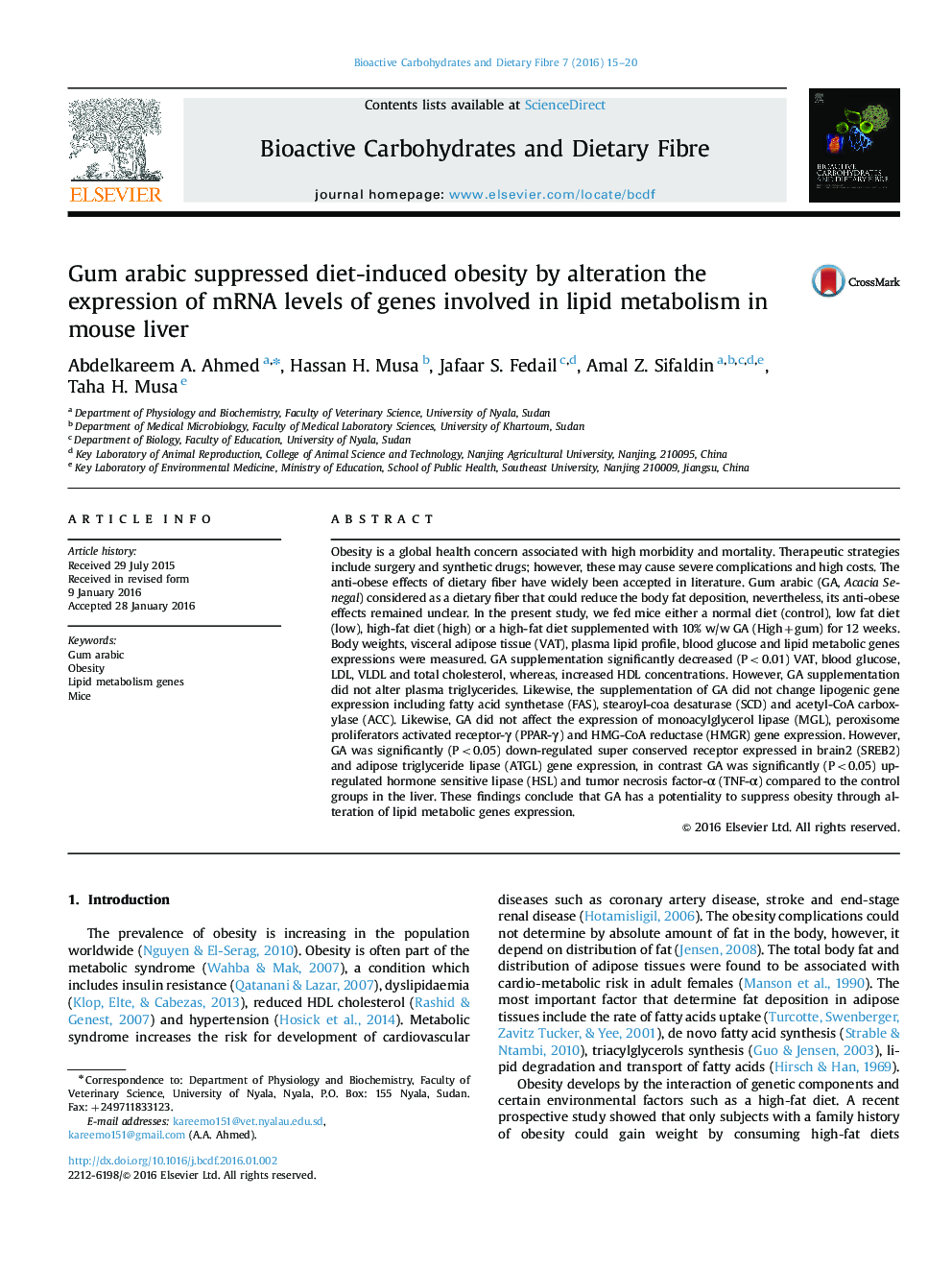| کد مقاله | کد نشریه | سال انتشار | مقاله انگلیسی | نسخه تمام متن |
|---|---|---|---|---|
| 1412958 | 985842 | 2016 | 6 صفحه PDF | دانلود رایگان |
• 10% of Guam Arabic decreased body weight, food intake and visceral adipose tissue in mice.
• 10% of Gum Arabic Decreased plasma glucose, LDL, VLDL and total cholesterol.
• Upregulated SREB2 and ATGL mRNA expression in mice liver.
• Downregulated HSL and TNF-α mRNA expression in mice liver.
Obesity is a global health concern associated with high morbidity and mortality. Therapeutic strategies include surgery and synthetic drugs; however, these may cause severe complications and high costs. The anti-obese effects of dietary fiber have widely been accepted in literature. Gum arabic (GA, Acacia Senegal) considered as a dietary fiber that could reduce the body fat deposition, nevertheless, its anti-obese effects remained unclear. In the present study, we fed mice either a normal diet (control), low fat diet (low), high-fat diet (high) or a high-fat diet supplemented with 10% w/w GA (High+gum) for 12 weeks. Body weights, visceral adipose tissue (VAT), plasma lipid profile, blood glucose and lipid metabolic genes expressions were measured. GA supplementation significantly decreased (P<0.01) VAT, blood glucose, LDL, VLDL and total cholesterol, whereas, increased HDL concentrations. However, GA supplementation did not alter plasma triglycerides. Likewise, the supplementation of GA did not change lipogenic gene expression including fatty acid synthetase (FAS), stearoyl-coa desaturase (SCD) and acetyl-CoA carboxylase (ACC). Likewise, GA did not affect the expression of monoacylglycerol lipase (MGL), peroxisome proliferators activated receptor-γ (PPAR-γ) and HMG-CoA reductase (HMGR) gene expression. However, GA was significantly (P<0.05) down-regulated super conserved receptor expressed in brain2 (SREB2) and adipose triglyceride lipase (ATGL) gene expression, in contrast GA was significantly (P<0.05) up-regulated hormone sensitive lipase (HSL) and tumor necrosis factor-α (TNF-α) compared to the control groups in the liver. These findings conclude that GA has a potentiality to suppress obesity through alteration of lipid metabolic genes expression.
Figure optionsDownload as PowerPoint slide
Journal: Bioactive Carbohydrates and Dietary Fibre - Volume 7, Issue 1, January 2016, Pages 15–20
